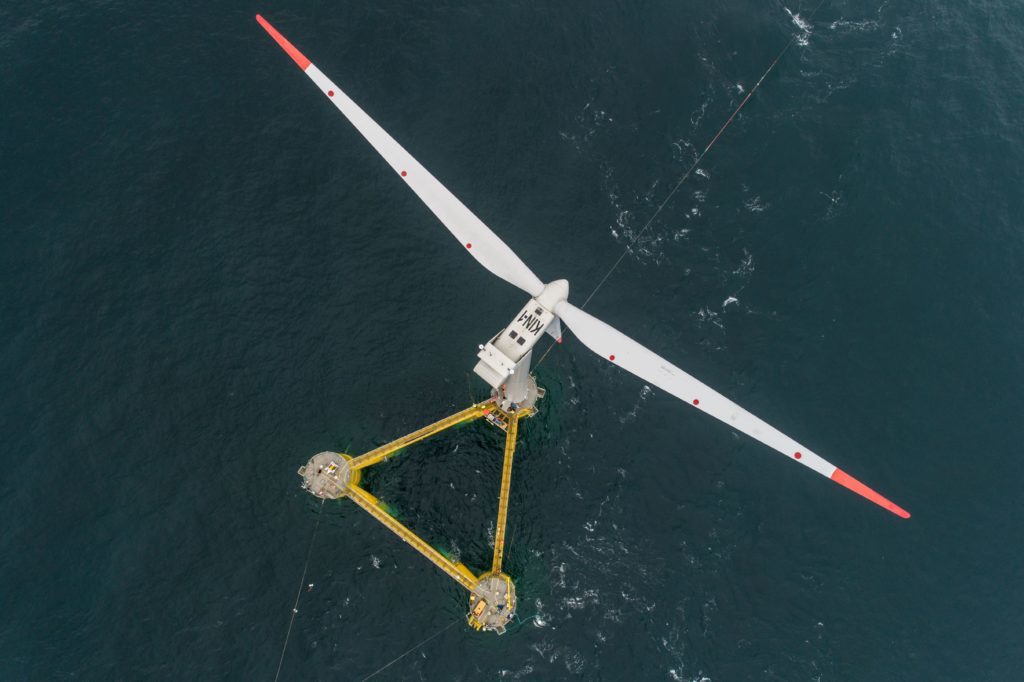
A new report published today by two of the UK’s most prominent energy trade bodies will focus on job creation within the floating offshore wind sector.
RenewableUK and its Scotland trade body counterpart, Scottish Renewables, new industry vision claims an up-scaled floating sector could support 17,000 jobs across UK coastlines by 2050.
The report estimates it could bring in £230 million a year by 2031 to UK based exporters.
It also claims the floating offshore wind sector could be worth £33.6 billion in economic activity over the next 30 years.
The world’s first floating offshore wind farm, Hywind Scotland, was installed by Norwegian firm Equinor off the coast of Peterhead in 2017.
Cobra International are also currently constructing the five-turbine Kincardine Floating Offshore Wind Farm off Aberdeen.
Morag Watson, director of policy at Scottish Renewables, said: “Scotland’s offshore energy experience and our deep water wind resource means we’re already a world leader in floating wind – technology which will be necessary to meet our net-zero emissions target and offers the most cost-effective pathway to delivering more than 50GW of offshore wind in UK waters.
“This publication sets out how government, working with industry, as agreed in the Offshore Wind Sector Deal, can identify and deliver joint investments in the infrastructure which will underpin the development of floating wind and its supply chain, supporting the development of the UK Industrial Strategy.”
Wth a total install capacity of 75 gigawatts in the UK, Scotland is understood to have sizable offshore wind potential, with Aberdeen thought to be a natural choice of base due to its relationship with the oil and gas sector.
Oil and gas giants Shell and Total also recently signaled their interest in North Sea floating offshore wind development.
Jean Morrison, chairwoman of Aberdeen Renewable Energy Group (AREG) welcomed the new report and suggested it could “provide significant guidance” for the future potential of floating wind.
She added: “AREG members and the local supply chain have a unique role to play in accelerating the technology to fully commercial scale and I would encourage all stakeholders to work together to realise the promise of this emerging technology.”
Recommended for you
